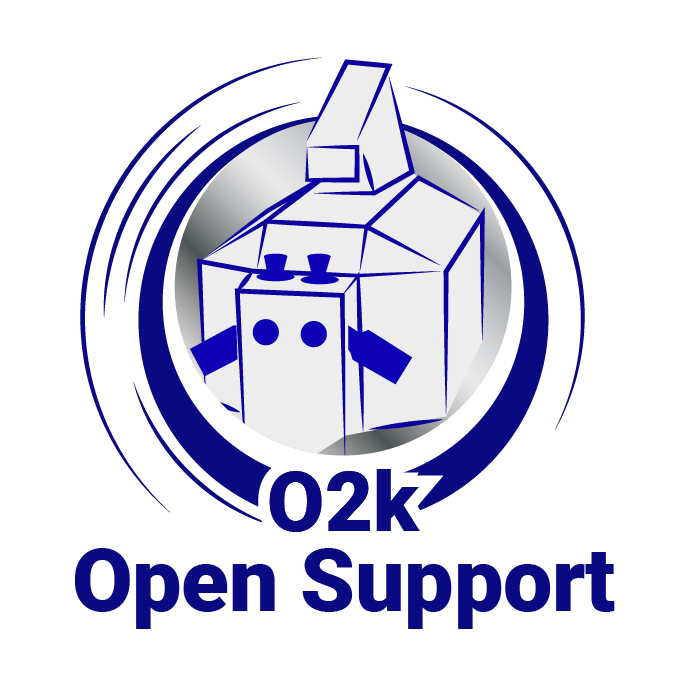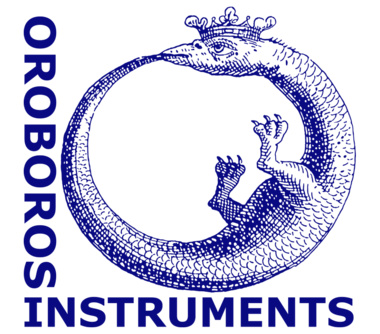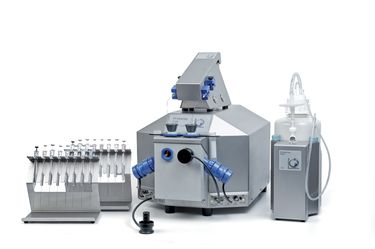Difference between revisions of "User talk:Tindle Lisa/My sandbox Package Page"
Tindle Lisa (talk | contribs) |
Tindle Lisa (talk | contribs) |
||
| Line 1: | Line 1: | ||
{{ | {{Template:OROBOROS banner}} | ||
{{Template:OROBOROS navigation line}} | |||
<big> | |||
== About Oroboros Instruments == | |||
| | '''Who?''' [[Image:Logo OROBOROS INSTRUMENTS.jpg|right|380px|link=Oroboros Instruments]] | ||
| | :::Dr. Erich Gnaiger leads a diverse international team of scientific experts. By actively participating in research (see: publications) along with hosting international researchers (visiting scientists) in the fully equipped Oroboros MitoFit Laboratory, our science specialists fully understand what is required to conduct excellent research. They develop tested and trusted O2k instruments and protocols that enable researchers and clinicians to study mitochondrial function in cancer, diabetes, aging, neurodegeneration, exercise physiology and mitochondrial medicine. | ||
'''What?''' | |||
:::The driving force in mitochondrial physiology: | |||
::::* Providing gold standard Oroboros O2k technology for high-resolution respirometry (HRR) worldwide. | |||
::::* Creating a network that connects over 600 reference laboratories. | |||
::::* Organizing international O2k-Workshops on a regular basis, allowing for hands-on practical training provided by our experts. | |||
'''When?''' | |||
:::Founded in 1994 and boasting more than 25 years of experience | |||
'''Where?''' | |||
:::Located in picturesque Innsbruck, Austria with labs, hospitals, research centers, pharmaceutical and biotech companies around the globe benefiting from the robustness, reliability and high quality of our products. | |||
'''Why?''' | |||
:::We do not develop instruments to be in business with science, but we are in business to develop instruments and promote Gentle Science. | |||
| | == About Our Products == | ||
| | [[File:O2k-Fluorometer.jpg|right|375px|link=http://wiki.oroboros.at/index.php/O2k-FluoRespirometer |O2k-FluoRespirometer]] {{NextGen-O2k H2020-support}} | ||
| | [[Oroboros_O2k|Oroboros O2k]] represents the unique concept of the modular O2k-system for [[high-resolution respirometry]] (HRR). The O2k is applied world-wide in areas ranging from fundamental bioenergetics to the analysis of mitochondrial and metabolic diseases, advancing the rapidly growing field of preventive mitochondrial medicine. Mitochondrial fitness requires monitoring in a variety of age-related health risks, such as cancer, cardiovascular, degenerative, and neurodegenerative diseases. Our flagship package is the [[O2k-FluoRespirometer]] for mitochondria and cell research. Small amounts of biological samples can be used for bioenergetic and OXPHOS analysis, ranging from isolated mitochondria, permeabilized tissues and permeabilized cells to intact cells and tissues slices.The modular O2k-concept is supported by specially developed O2k-Software, [[DatLab|DatLab 7]], with high flexibility for extension by add-on [[O2k-Catalogue: O2k-Modules | O2k-Modules]] or economical first steps with the [[Startup O2k-Respirometer]]. The high-resolution O2k technology emphasizes quality and scientific output of research in mitochondrial physiology and pathology. | ||
| | |||
::::*The O2k-FluoRespirometer can be used for simultaneous monitoring of oxygen consumption and either ROS production (AmR), mitochondrial (mt-) membrane potential (TMRM, Safranin and Rhodamine), Ca2+ (CaG) or ATP production (MgG). | |||
::::*Add-on MultiSensor modules enable measurement of mt-membrane potential with ion sensitive electrodes (for TPP+ or TPMP+), Ca2+ or pH. | |||
::::*O2k software DatLab for data acquisition and analysis provides protocols for quality control and substrate-uncoupler-inhibitor titration (SUIT) protocols, guiding the user step-by-step through the desired experiment. | |||
::::*Further extended by novel Q-redox and PhotoBiology modules, the [[NextGen-O2k]] is being developed as the all-in-one device for real-time monitoring of mitochondrial/chloroplast function. Its innovations, built upon the Oroboros O2k technology, ensure reproducible and accurate results. | |||
Revision as of 11:14, 29 August 2019
About Oroboros Instruments
Who?
- Dr. Erich Gnaiger leads a diverse international team of scientific experts. By actively participating in research (see: publications) along with hosting international researchers (visiting scientists) in the fully equipped Oroboros MitoFit Laboratory, our science specialists fully understand what is required to conduct excellent research. They develop tested and trusted O2k instruments and protocols that enable researchers and clinicians to study mitochondrial function in cancer, diabetes, aging, neurodegeneration, exercise physiology and mitochondrial medicine.
What?
- The driving force in mitochondrial physiology:
- Providing gold standard Oroboros O2k technology for high-resolution respirometry (HRR) worldwide.
- Creating a network that connects over 600 reference laboratories.
- Organizing international O2k-Workshops on a regular basis, allowing for hands-on practical training provided by our experts.
- The driving force in mitochondrial physiology:
When?
- Founded in 1994 and boasting more than 25 years of experience
Where?
- Located in picturesque Innsbruck, Austria with labs, hospitals, research centers, pharmaceutical and biotech companies around the globe benefiting from the robustness, reliability and high quality of our products.
Why?
- We do not develop instruments to be in business with science, but we are in business to develop instruments and promote Gentle Science.
About Our Products
Oroboros O2k represents the unique concept of the modular O2k-system for high-resolution respirometry (HRR). The O2k is applied world-wide in areas ranging from fundamental bioenergetics to the analysis of mitochondrial and metabolic diseases, advancing the rapidly growing field of preventive mitochondrial medicine. Mitochondrial fitness requires monitoring in a variety of age-related health risks, such as cancer, cardiovascular, degenerative, and neurodegenerative diseases. Our flagship package is the O2k-FluoRespirometer for mitochondria and cell research. Small amounts of biological samples can be used for bioenergetic and OXPHOS analysis, ranging from isolated mitochondria, permeabilized tissues and permeabilized cells to intact cells and tissues slices.The modular O2k-concept is supported by specially developed O2k-Software, DatLab 7, with high flexibility for extension by add-on O2k-Modules or economical first steps with the Startup O2k-Respirometer. The high-resolution O2k technology emphasizes quality and scientific output of research in mitochondrial physiology and pathology.
- The O2k-FluoRespirometer can be used for simultaneous monitoring of oxygen consumption and either ROS production (AmR), mitochondrial (mt-) membrane potential (TMRM, Safranin and Rhodamine), Ca2+ (CaG) or ATP production (MgG).
- Add-on MultiSensor modules enable measurement of mt-membrane potential with ion sensitive electrodes (for TPP+ or TPMP+), Ca2+ or pH.
- O2k software DatLab for data acquisition and analysis provides protocols for quality control and substrate-uncoupler-inhibitor titration (SUIT) protocols, guiding the user step-by-step through the desired experiment.
- Further extended by novel Q-redox and PhotoBiology modules, the NextGen-O2k is being developed as the all-in-one device for real-time monitoring of mitochondrial/chloroplast function. Its innovations, built upon the Oroboros O2k technology, ensure reproducible and accurate results.







